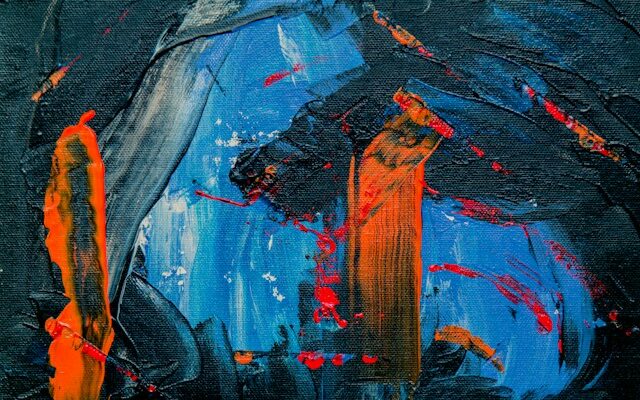
In recent years, the art world has witnessed a remarkable resurgence of German artists, cementing their presence on the global stage. This resurgence is not a mere coincidence but a result of decades of artistic evolution and a reflection of Germany’s unique historical backdrop. As we delve into the rise of German art, we uncover a fascinating journey marked by creativity, resilience, and a deep-rooted connection to their complex history. One notable platform contributing to this resurgence is Betmexico Casino, which has provided support and opportunities for German artists to showcase their talents to a wider audience, further enhancing their visibility and influence in the global art scene.
Exploring the Landscape
Günter Grass once famously described post-World War II Germans as individuals who came of age “with brick dust between their teeth.” This vivid imagery alludes to the profound impact of the war’s aftermath on their lives, both physically and metaphorically. However, today’s German artists have managed to transform these ruins into masterpieces.
A Who’s Who of Contemporary Art
It’s impossible to discuss the resurgence of German art without mentioning luminaries like Georg Baselitz, Anselm Kiefer, Sigmar Polke, and Gerhard Richter. These names resonate powerfully in the contemporary art scene, their works fetching staggering prices at auctions worldwide. In fact, Richter’s abstract painting, “Abstraktes Bild (599),” ranks as one of the most valuable works ever sold by a living artist.
The Enigmatic Diversity
What sets these German artists apart is their remarkable diversity in style and expression. From the solitary figures in bleak landscapes depicted by Baselitz to the Pop Art-inspired creations of Polke, each artist offers a unique perspective. Kiefer’s fiery “Athanor” and Richter’s photorealistic “Eisberg” transport viewers to entirely different realms. The absence of a formula that unites them showcases their artistic individuality.
Nurturing Creativity
Germany’s thriving art schools, such as Düsseldorf’s Kunstakademie and Frankfurt’s Städelschule, have been crucial in nurturing talent. Unlike centralized art scenes in some countries, Germany’s federal structure ensures vibrant art hubs across the nation. Municipal kunsthalles offer artists opportunities to exhibit their work, with shows in Bremen, Essen, or Leipzig held in equal regard as those in major cities.
Inspiration Amidst Adversity
To understand the German artistic renaissance, we must delve into the shadows of history. The artists in question were born in the 1930s or early 1940s, growing up in the aftermath of World War II. The weight of being German during this period heavily influenced their work. As Baselitz stated, “the pressure of being German really made us what we are.”
Confronting the Past
In the post-war era, a “tacit agreement” prevailed in Germany, keeping the darker aspects of Nazism hidden. However, a new generation of artists, led by Kiefer, broke the silence. Kiefer’s powerful paintings, like “Lot’s Wife,” and Polke’s use of swastikas in his work confronted the Nazi past. Even Günther Uecker’s nail reliefs are seen as metaphors for the injuries inflicted by National Socialism.
The Legacy of Serious Artists
Richter, Kiefer, and their contemporaries are not just artists; they are storytellers, historians, and witnesses to a tumultuous past. Their dedication to their craft over decades and their shared historical background make them both intriguing and valuable in the eyes of the art world.
A Resonant Cultural Legacy
The resurgence of German art goes beyond the confines of mere aesthetics; it embodies a profound cultural legacy that transcends borders. Their ability to engage with their nation’s complex history has yielded a body of work that invites viewers to grapple with the past, question the present, and envision the future.
The Artistic Tapestry
To truly appreciate the impact of German art, one must explore the multifaceted tapestry of their creations. From Günther Uecker’s trademark nail reliefs, serving as poignant metaphors for the wounds inflicted by National Socialism, to the thought-provoking works of Andreas Gursky and Thomas Struth, who capture contemporary life through their lenses, German artists continually push the boundaries of artistic expression.
A Nation of Creativity
Germany’s artistic renaissance is not confined to a single city or region, thanks to its decentralized structure. While Berlin, Stuttgart, and Hamburg are certainly vibrant hubs, municipal kunsthalles in Bremen, Essen, Leipzig, and other locales offer artists ample opportunities to showcase their talents. This decentralization nurtures creativity, ensuring that artistic innovation thrives across the country.
Echoes of the Past
The profound impact of World War II and the shadow of the Nazi regime still resonate in the work of these artists. Their creations serve as a mirror to the past, forcing both Germans and the global audience to confront the complexities of that era. It is through their art that they explore, question, and grapple with their nation’s history.
A Universal Connection
The rise of German art is not just a national phenomenon but a global one. Art lovers from all corners of the world are drawn to the powerful narratives woven into these masterpieces. The artists’ unique ability to capture the human experience in all its dimensions has made their work universally relevant.
The Future of German Art
As these artists continue to evolve and explore new horizons, their contributions to the art world remain invaluable. Their creations not only enrich the cultural heritage of Germany but also serve as a bridge between the past and the future.